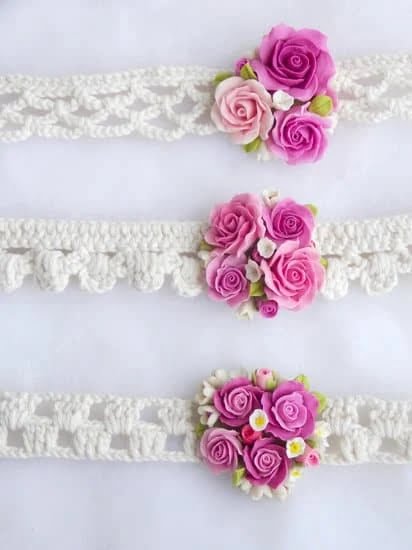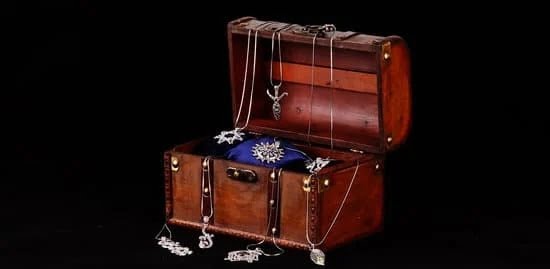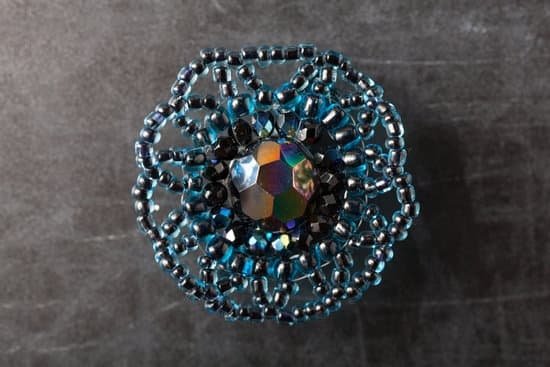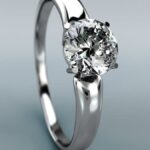Diamond jewelry is often seen as a symbol of luxury, elegance, and timeless beauty. Many individuals choose to invest in these exquisite pieces to not only enhance their personal style but also as a potential store of value. However, questions about the depreciation or appreciation of diamond jewelry have always been a matter of concern for buyers and investors alike.
In this article, we will delve into the intriguing topic of whether diamond jewelry depreciates over time. We will explore various aspects related to the value of diamond jewelry, including the definition of depreciation within the context of these precious stones, the factors that determine their depreciation rate, and market trends that shed light on whether diamonds appreciate or depreciate in value over time.
Understanding the value of diamond jewelry is crucial for individuals who are considering investing in these precious gems or simply want to ensure that their existing collection maintains its worth. By examining different angles ranging from quality considerations to resale opportunities and alternative investments in diamonds, we will provide readers with valuable insights and tips on how to minimize depreciation and make informed decisions regarding diamond jewelry.
So if you’ve ever wondered about the fate of your treasured diamond pieces, read on to discover more about this fascinating subject.
Defining Depreciation in the Context of Diamond Jewelry
Depreciation, in the context of diamond jewelry, refers to the decrease in value that occurs over time. While diamonds are known for their durability and resistance to wear and tear, their value can still be affected by various factors such as market trends, the quality of the diamond, and changes in consumer preferences. Understanding depreciation is crucial for those considering purchasing or investing in diamond jewelry.
What Causes Diamond Jewelry to Depreciate?
One of the primary reasons diamond jewelry depreciates is because it is a consumer product. Similar to other consumer goods, diamonds follow market trends and can be influenced by changes in demand. For example, if a certain style or design becomes less popular or if there is an oversupply of similar diamonds in the market, the value of diamond jewelry may decrease.
Another factor that contributes to depreciation is technological advancements. As new methods for creating synthetic diamonds emerge or improvements are made in lab-grown diamonds, the overall value of natural diamonds may be impacted. This is particularly relevant when it comes to lower quality and smaller sized stones.
Evaluating Depreciation Rates
It’s important to note that not all types of diamond jewelry depreciate at the same rate. Higher quality diamonds with excellent cut, color, clarity, and carat weight tend to hold their value better over time compared to lower quality stones. Additionally, unique or rare diamond pieces such as antique or vintage jewelry may even appreciate in value due to their scarcity.
Market conditions also play a significant role. Economic downturns or instability can lead to decreased disposable income and reduced demand for luxury items like diamond jewelry. On the other hand, during periods of economic growth and stability, demand for these items tends to rise along with their prices.
Ultimately, multiple factors come into play when determining the depreciation rate of diamond jewelry. It’s important for potential buyers and investors to consider these factors before making any purchase or investment decisions. By understanding the nuances of depreciation, individuals can minimize their financial risks and make informed choices when it comes to diamond jewelry.
Factors That Determine the Depreciation Rate of Diamond Jewelry
Diamond jewelry, like any other asset, may experience depreciation over time. However, the rate at which diamond jewelry depreciates can be influenced by various factors. Understanding these factors can help individuals make informed decisions when purchasing and investing in diamond jewelry.
Quality of Diamonds
One of the primary factors that determine the depreciation rate of diamond jewelry is the quality of the diamonds used in it. The four Cs – carat weight, cut, color, and clarity – play a significant role in determining a diamond’s value. High-quality diamonds with excellent cut and clarity are generally more valuable and tend to retain their value better over time.
Furthermore, diamonds with rare colors or fancy cuts may appreciate in value due to their uniqueness. On the other hand, lower-quality diamonds may depreciate more rapidly. It is essential to evaluate the quality of diamonds carefully before making a purchase to minimize potential depreciation.
Market Demand
Market demand is another critical factor that influences the depreciation rate of diamond jewelry. Like any commodity, supply and demand dynamics play a significant role in determining its value over time. If there is high demand for diamond jewelry in the market, prices are likely to remain stable or even appreciate.
Conversely, if market demand for diamond jewelry declines significantly, prices may see a depreciation effect. Factors such as changes in fashion trends or economic conditions can impact market demand for diamond jewelry. As a result, it is crucial to consider market trends and sentiments when predicting the future depreciation rate of diamond jewelry.
Condition and Maintenance
The condition of diamond jewelry also affects its depreciation rate. Regular wear and tear or insufficient maintenance can result in scratches, chips, or damage to the setting of diamonds. These factors may decrease the appeal and value of diamond jewelry.
Proper care and maintenance can help slow down the depreciation process. Regular cleaning, storing diamond jewelry in a safe place when not in use, and avoiding exposure to harsh chemicals or extreme temperatures can preserve its condition. By investing time and effort into maintaining diamond jewelry, individuals can extend its lifespan and potentially minimize depreciation.
Overall, while diamond jewelry may experience some degree of depreciation over time, various factors determine the rate at which it depreciates. Considering the quality of diamonds, market demand, and proper maintenance can help individuals minimize potential depreciation and make more informed decisions when buying or investing in diamond jewelry.
Market Trends
One of the most common questions that people have when considering purchasing diamond jewelry is whether or not it will appreciate or depreciate in value over time. The answer to this question can vary, as the market for diamond jewelry is influenced by several factors.
Historically, diamonds have been perceived as a long-term investment and a symbol of wealth and status. However, it is important to note that the value of diamond jewelry can be subject to fluctuations in the market.
In recent years, there has been an upward trend in the appreciation of diamonds, mainly driven by increasing demand from emerging markets such as India and China. These markets have seen a surge in disposable income and an expanding middle class, leading to higher demand for luxury goods like diamond jewelry. This increased demand has resulted in higher prices for diamonds, leading to their appreciation over time.
However, it is crucial to recognize that not all diamonds appreciate at the same rate. Factors such as carat weight, cut, color, and clarity play a significant role in determining the value of a diamond. For example, rare colored diamonds such as pink or blue diamonds tend to appreciate at a much higher rate than white diamonds due to their scarcity and desirability among collectors.
The Role of Diamond Quality in Depreciation
Diamond quality plays a significant role in determining the depreciation of diamond jewelry over time. The quality of a diamond is typically evaluated based on the famous 4Cs – carat weight, color, clarity, and cut. Each of these factors has its own impact on the value and depreciation rate of diamond jewelry.
Carat weight, referring to the size of the diamond, is one factor that affects the depreciation rate. Generally, larger diamonds have a higher initial value and are more resistant to depreciation due to their rarity. Smaller diamonds may experience a faster depreciation rate as they are less likely to retain their value in the market.
Color is another important factor in determining diamond quality. The Gemological Institute of America (GIA) grades diamonds on a scale from D (colorless) to Z (light yellow or brown). Colorless diamonds (graded D-F) are considered more valuable and have a slower depreciation rate compared to those with lower color grades. This is because colorless diamonds are rarer and highly sought after by consumers.
Clarity refers to the presence of internal or external imperfections called inclusions or blemishes in a diamond. Diamonds with fewer or no visible imperfections have a higher clarity grade and tend to have a slower rate of depreciation. Diamonds with higher clarity grades like VVS (very, very slightly included) or IF (internally flawless) hold their value better over time since they are considered to be more desirable and rare.
Lastly, cut plays a crucial role in both the beauty and value of a diamond. A well-cut diamond reflects light brilliantly, emphasizing its sparkle and fire. Diamonds with excellent or ideal cuts are highly sought after by consumers and therefore tend to have a slower depreciation rate. This is because well-cut diamonds showcase their inherent characteristics better, making them more visually appealing.
In summary, the quality factors of carat weight, color, clarity, and cut all contribute to determining how quickly diamond jewelry may depreciate over time. Investing in higher-quality diamonds with larger carat weights, higher color grades, better clarity, and exceptional cuts can help minimize depreciation and maintain the value of diamond jewelry in the long run.
Resale Value
The resale value of diamond jewelry is an important consideration for those looking to invest in these precious gemstones. This section will delve into the factors that influence the resale value of diamond jewelry and explore the secondary market for these pieces. By understanding the dynamics of selling diamond jewelry, individuals can make informed decisions when it comes to their investments.
When it comes to selling diamond jewelry, several factors play a role in determining its resale value. One of the most significant factors is the condition of the piece. Well-maintained and properly cared for jewelry will generally have a higher resale value compared to items that show signs of wear or damage. Regular cleaning and maintenance, as well as proper storage, can help preserve the condition of diamond jewelry over time.
Another vital factor in determining resale value is the brand or designer associated with the piece. Jewelry from luxury brands often commands a higher price compared to pieces from generic or lesser-known designers. The reputation and prestige associated with certain brands can significantly impact the demand and subsequent price offered in the secondary market.
Market demand also plays a crucial role in determining resale value. Items that are currently trending or popular among consumers are more likely to fetch a higher price in the secondary market. This could include designs that are considered classic and timeless, as well as pieces featuring popular diamond cuts such as round brilliant or princess-cut diamonds.
| Factors | Influence on Resale Value |
|---|---|
| Condition | Well-maintained pieces generally have higher resale values. |
| Brand/Designer | Jewelry from luxury brands command higher prices. |
| Market Trends | Items currently in demand fetch higher prices. |
| Diamond Quality | Higher-quality diamonds generally have higher resale values. |
Understanding the factors that influence the resale value of diamond jewelry can help individuals make informed decisions when it comes to purchasing and selling these pieces. By considering aspects such as condition, brand or designer, market trends, and diamond quality, investors can maximize the potential return on their investment in diamond jewelry.
It is essential to research and stay updated on the current market trends to make well-informed decisions regarding selling or holding onto diamond jewelry for potential appreciation in the future.
Tips for Minimizing Depreciation in Diamond Jewelry
Diamond jewelry can be a significant investment, so it’s only natural that owners would want to take steps to minimize depreciation. While it’s impossible to completely eliminate depreciation, there are several tips and strategies that can help minimize its impact on the value of diamond jewelry.
One important tip for minimizing depreciation is to properly care for and maintain the diamond jewelry. Regular cleaning and inspection by a professional jeweler can help identify any issues or damage early on, allowing for necessary repairs before they become more severe. Storing the jewelry in a safe and secure place when not being worn can also help protect it from accidental damage or loss.
Another tip is to choose timeless and classic designs when purchasing diamond jewelry. Trends come and go, and while unique or extravagant pieces may be popular at one point in time, they may not hold their value as well over the long term. Opting for more traditional designs that have stood the test of time ensures that the jewelry will remain in style and desirable even as fashion trends change.
Finally, considering factors such as color, cut, clarity, and carat weight when purchasing diamond jewelry can also play a role in minimizing depreciation. Higher quality diamonds with better clarity grades and color ratings tend to retain their value better than lower quality diamonds. Additionally, diamonds with a larger carat weight may hold their value better over time compared to smaller diamonds.
By following these tips for minimizing depreciation, diamond jewelry owners can help preserve the value of their investment. While some amount of depreciation is inevitable with any luxury item, taking proactive steps to care for and choose quality pieces can make a significant difference in preserving the value of diamond jewelry over time.
| Tips | Data |
|---|---|
| Care for and maintain the jewelry | Regular cleaning and inspection; proper storage |
| Choose timeless and classic designs | Opt for traditional styles that remain desirable |
| Consider diamond quality factors | Higher quality diamonds tend to retain value better |
Alternative Investments
Investing in diamonds has become an increasingly popular alternative investment option in recent years. While traditional investment vehicles such as stocks and real estate have their merits, some investors are choosing to diversify their portfolios by including diamond jewelry. In this section, we will explore the various diamond investment opportunities available and discuss the factors to consider when venturing into this alternative investment.
One of the key ways to invest in diamonds is through purchasing loose diamonds. Investing in loose diamonds allows you to take advantage of changes in market conditions and potentially maximize your returns. When investing in loose diamonds, it is important to carefully select stones that are certified by reputable gemological laboratories, such as the Gemological Institute of America (GIA). These certifications ensure the authenticity and quality of the diamonds, which can greatly impact their future value.
Another option for diamond investing is through diamond exchange-traded funds (ETFs). ETFs provide investors with exposure to a diversified portfolio of diamonds without actually having to own physical stones.
This can be a more convenient option for those who do not want the hassle of storing and insuring physical diamond jewelry. However, it’s important for investors to conduct thorough research on the specific ETF they are interested in and consider factors such as management fees and track record before making any investments.
Additionally, some investors may opt for investing directly in diamond jewelry pieces. This can include purchasing high-quality diamond rings, necklaces, or bracelets with the intention of holding onto them as an investment. When considering this option, it is crucial to focus on acquiring pieces with timeless designs and exceptional craftsmanship. Such pieces tend to hold their value better over time due to their enduring appeal.
Conclusion
In conclusion, the value of diamond jewelry can be subject to depreciation over time. However, the rate of depreciation is influenced by several factors. Market trends play a significant role in determining whether diamonds appreciate or depreciate. While diamonds generally hold their value well, they may not always experience substantial appreciation.
The quality of the diamond also plays a crucial role in its depreciation rate. High-quality diamonds with excellent clarity and cut are more likely to retain their value over time compared to lower-quality stones. Investing in higher quality diamonds can be a way to minimize depreciation.
When it comes to resale value, there is a secondary market for diamond jewelry where individuals can sell their pieces. However, it’s important to note that resale values can vary widely depending on factors such as market conditions and the specific characteristics of the piece.
To mitigate depreciation, there are some tips that diamond owners can follow. Regular maintenance and cleaning can help keep the diamond in good condition and increase its resale potential. Additionally, purchasing from reputable jewelers and obtaining proper certifications can provide buyers with reassurance about the quality of their investment.
While diamond jewelry does experience some level of depreciation, it is still considered one of the most desirable and valuable forms of investment. For those looking for alternative investment opportunities, diamonds can provide an attractive option with potential long-term returns. Ultimately, understanding the factors that influence depreciation and taking proactive steps toward minimizing it can help maximize the value and enjoyment derived from diamond jewelry investments.
Frequently Asked Questions
Does diamond jewelry hold its value?
Diamond jewelry has long been considered a valuable investment due to its enduring beauty and rarity. While it is true that diamond prices can fluctuate, overall, diamond jewelry tends to hold its value relatively well compared to other forms of jewelry or luxury goods.
The value of diamond jewelry is influenced by various factors such as the quality of the diamond itself, the brand reputation, market demand, and economic conditions. However, it is important to note that not all diamonds are created equal, and certain factors such as clarity, color, carat weight, and cut can greatly affect the value retention.
How much does diamond jewelry depreciate?
The depreciation of diamond jewelry can vary depending on several factors. Generally speaking, high-quality diamonds tend to hold their value better over time compared to lower-quality ones.
However, it is important to keep in mind that like any other luxury item or collectible, diamond jewelry may experience some depreciation due to market fluctuations or changes in trends. Additionally, if one decides to resell their diamond jewelry, they might encounter depreciation due to potential markups from retailers when initially purchasing the piece.
How much do diamonds depreciate after buying?
Diamonds typically experience an immediate drop in value after purchase due to retail markups and other associated costs involved in buying from a jeweler. These costs cover various aspects such as manufacturing expenses, overheads, marketing expenses, and profit margins for jewelers. Therefore, it is common for diamonds to depreciate after buying them.
However, this initial depreciation should not discourage individuals from investing in diamond jewelry since its long-term value retention potential tends to be favourable compared to many other consumer goods. As mentioned earlier though, the actual post-purchase depreciation can vary depending on several factors including overall market conditions and specific attributes of the diamond itself.

Welcome to my jewelry blog! My name is Sarah and I am the owner of this blog.
I love making jewelry and sharing my creations with others.
So whether you’re someone who loves wearing jewelry yourself or simply enjoys learning about it, be sure to check out my blog for insightful posts on everything related to this exciting topic!





